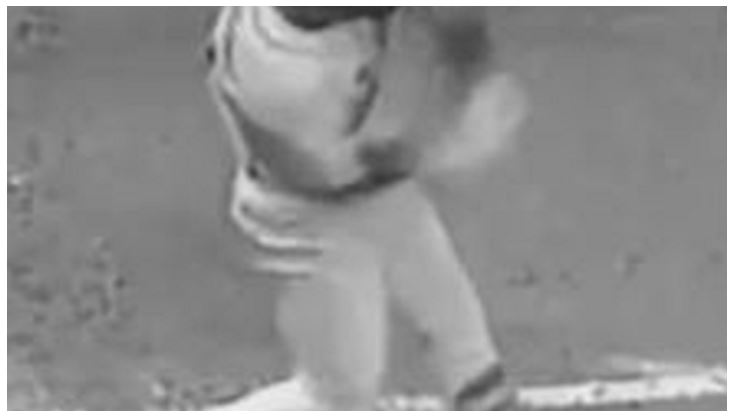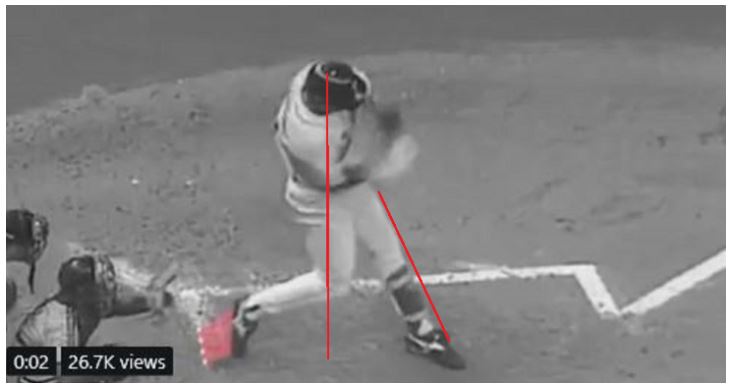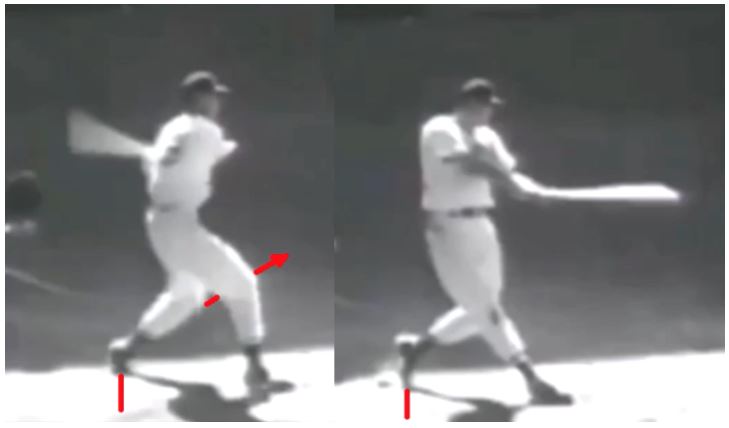
Is A Biomechanics Certification All It's Cracked Up To Be?
By Ken Cherryhomes
This is a Twitter post from On Base U, an organization that certifies coaches in biomechanics for batting and pitching. It shouldn’t be surprising that experts in golf would apply their understanding of swing mechanics to baseball batting incorrectly. After all, we are all limited to asking and answering the questions given our experience in a particular field.
This is one of many posts I have seen in which they were either partly, mostly, or entirely incorrect in their description and recommendation of swing biomechanics.
Let me first state, I fully acknowledge the importance of weight transfer and the pivotal role of the hips/pelvis in a swing. However, the notion that the back foot moving forward enhances the swing is severely flawed. Moreso, because this in no way, biomechanically, positively enhances the delivery of weight when swinging a bat.
Such a motion is linear when what’s needed is rotational action. Observing Edgar, it’s clear he sustains a central balance throughout his swing, supported by a robust front leg.

It is common, intuitive, to think and then initiate a first move in a forward direction, since we are told to drive weight forward. However, either by subconscious or intentional instruction, we are also taught to “rotate” our weight forward, as OnBaseU suggests, as do I.
The result of a linear move transitioning into a rotational one is usually demonstrated by a rear foot dragged forward, which is very common, or a “scissor” like kick. The reason for both is they are compensatory moves, a way to remove a block or obstruction to a rotational turn.
Was Edgar a worse hitter because he moved his back foot forward when he swung? No. It was probably inconsequential to his hitting success. Here we have a team of biomechanical experts, led by a doctor in this field, who assert the movement forward of the rear foot is a key indicator of maximizing rotational energy. Let’s delve a bit deeper into this.
Edgar’s Swing:
- Rear Foot Movement: The movement of Edgar’s rear foot towards the pitcher is indicative of a linear initiation. This forward movement is not necessarily an efficient, “clean” way to generate rotational power. Instead, it is a compensatory action due to other biomechanical inefficiencies, intentions or habits developed over time.
- Center of Mass (COM): Edgar’s COM remains centered. This is crucial because, even with the forward movement of the back foot, he maintains rotational efficiency by keeping his COM centered over his base. This allows him to maintain balance and still generate force without dissipating the angular momentum as his swing accelerated. Had he moved his COM forward, linearly, this would impart a linear influence, which would impact his swing force negatively, diminishing the angular momentum (rotational) of his swing. Since his COM is stable, the rear foot moving forward has no impact on his weight shift into rotation, positively or negatively.
- Hip Rotation: The dragging or “scissor kick” of the back foot is a compensatory action for a linear initiation. The hips lead the way in the swing, and if the back foot drags forward, it is due to the need to displace the obstruction limiting the pelvic rotation.
Now let’s observe the swing of the godfather of rotational hitting, the great Ted Williams.
When we look at a great rotational hitter like Ted Williams, his back foot remains stationary during a powerful home run swing, showcasing the essence of clean rotation. On the contrary, Edgar exhibits a linear knee movement, disrupting the rotation and causing the rear foot to shift. While some might mistake this for effective technique, it’s evident that a pure rotational movement, like that of Williams, is biomechanically superior.

Ted Williams’ Swing:
- Clean Rotation: The semi-circular movement of the rear knee, as seen in Ted’s swing, showcases efficient energy transfer. This rotational movement is optimal as it keeps the kinetic linking intact without introducing unnecessary linear movements. Moves like this are what enabled the “Splendid Splinter”, so called for his long, slender physique, to maximize his swing’s force.
- Rear Foot Stability: Ted’s rear foot remaining stationary (though rotated) is a testament to his ability to generate torque without any forward motion of the back foot. This allows for a more controlled and efficient rotation, maximizing power.
Here, Dr. Greg Rose, a golf expert, explains a foundational tenet of their training at On Base University, the forward movement of the rear foot at weight transfer. In his demonstration, unlike Edgar, has him moving his COM off its axis, his body moving over his front foot, exactly like a golfer.
Above, I easily demonstrate how to move rotationally, shifting weight efficiently, evidenced by my top of toe finish, while still remaining back, in the proper context of what “staying back” means, not shifting my body forward while shifting weight.
Above, I demonstrate the rotation with more energy, resulting in a “hop” of my back foot without moving my foot forward, still maintaining the original position of my COM.
The primary misconception offered by OnBaseU is associating the forward movement of the back foot with increased power. They suggest a rear foot that remains in the same place it began rotation is the equivalent example of “staying back”, when in fact, staying back is actually a recommendation to not move the COM off-axis, forward. Again, it is easy to understand why an expert in golf biomechanics can be confused by baseball idioms, as these things are beyond the scope of their understanding of baseball. This movement is more of a byproduct or compensatory action of other elements of the swing, rather than a primary contributor to energy transfer.
An efficient swing, from a biomechanical standpoint, emphasizes rotational movement, with energy being transferred cleanly and frictionlessly from the ground, through the kinetic chain, to the bat. Linear movements, especially those that disrupt the center of mass or the rotational axis, can introduce inefficiencies.
While both Edgar and Ted may achieve powerful hits, it’s the underlying biomechanical processes that differ. Ted’s swing exemplifies a more efficient rotational model, while Edgar’s showcases a combination of rotational and linear elements, both swings were obviously effective, but to suggest a forward movement of the rear foot is indicative of maximized weight shift for a rotational swing betrays a level of ignorance that should not exist from an entity purporting to certify biomechanics excellence through their training. While there may be evidence of expert hitters exhibiting inefficient mechanics, these inefficiencies are not what make them expert batters, but rather shows that expert batters can get away with or compensate for biomechanical inefficiencies. Teaching efficient mechanics should be the most important objective, particularly when you are offering expensive certification programs.
Conclusion
Roots in Golf Biomechanics: While golf and baseball swings share rotational mechanics, the movements’ specifics, objectives, and challenges differ considerably. Transferring knowledge from one domain to another requires careful adaptation and thorough understanding. There is no substitute for experience, regardless of one’s credentials. One’s ability to ask questions about a new discipline will always be limited to their experience. “Certifying” coaches can be a lucrative business model. However, the real value lies in the depth and accuracy of the training provided. If the training is shallow or lacks depth in baseball-specific biomechanics, it leads to dissemination of inaccurate or suboptimal information.
Please send questions and comments to:
